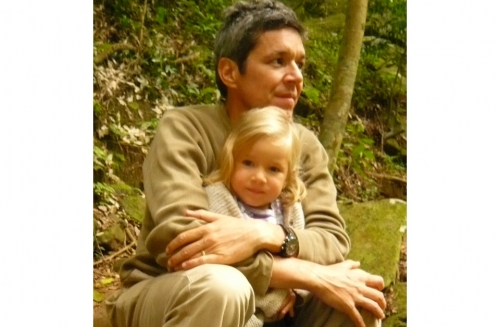Carter Coleman – President
about How It Started
 When I was young and foolish, still in my twenties, in 1989, I moved to the edge of a 3,000-foot cliff in the Usambara Mountains of Tanzania to fly a hang glider and write a novel. I built a one-room stone house on a spectacular spot where the sky met sheer grey cliffs festooned with hanging gardens of tropical green. Soaring about the base of the clouds, I could see below how badly the mountains were scarred. The rainforest that had cloaked the Usambaras for millions of years was mostly gone. Only patches remained. On the steep slopes of raw red clay were patchy cornfields and little villages of thatched-roof huts. The last stand of ancient forest was set on the high summit of the range. I used to go there to marvel at ocotea trees almost the size of redwoods.A botanist told me the big ocoteas were a thousand years old.
When I was young and foolish, still in my twenties, in 1989, I moved to the edge of a 3,000-foot cliff in the Usambara Mountains of Tanzania to fly a hang glider and write a novel. I built a one-room stone house on a spectacular spot where the sky met sheer grey cliffs festooned with hanging gardens of tropical green. Soaring about the base of the clouds, I could see below how badly the mountains were scarred. The rainforest that had cloaked the Usambaras for millions of years was mostly gone. Only patches remained. On the steep slopes of raw red clay were patchy cornfields and little villages of thatched-roof huts. The last stand of ancient forest was set on the high summit of the range. I used to go there to marvel at ocotea trees almost the size of redwoods.A botanist told me the big ocoteas were a thousand years old.
One day in 1991, I saw that two dozen of the giants had been felled. They were being cut into long planks by two men, one who stood on the side of the fallen tree and the other, holding the opposite end of a long saw, who stood in a pit they had dug beneath it. Looking around, I thought, They have murdered twenty thousand years of tree life. I jumped on an old motorcycle and drove ten hours to Dar es Salaam, the capital, where I had become friends with the American ambassador and his wife, Ned and Katia Dejarnette. They helped me reregister the Tanzania Forest Conservation Group, an organization formed by scientists in the mid-eighties that had fallen asleep when many had left Tanzania. The Dejarnettes helped me raise the first funds to start the first village project, for it was quickly apparent that the key to conserving the remaining forest was by helping the neighbouring villages. Then I came back to New York City and met up with Michele Clarke and the other founders of the Tanzania Wildlife Fund, the predecessor to ARC, and we began to raise money for the TFCG. Back in 1991, I put the ball in motion, but it was Ned and Katia, Michele and Beth O’Donnell and many others who have made the organization grow into what it is today.
Most of the credit goes to Meshack and Nike and the rest of the dedicated folks on the ground in Tanzania who have built what must be one of the most effective forest conservation and village development organizations in Africa. After more than 25 years, we can look back proudly on what has been accomplished while trying not to be daunted by the great challenges that lie ahead.
